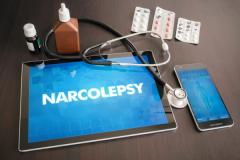
A Case of a 26-Year-Old Female With Type 2 Narcolepsy
Panelists discuss a woman aged 26 years with narcolepsy type 2 whose modafinil is ineffective and causes adverse effects, highlighting solriamfetol and oxybates as treatment options while emphasizing personalized care that integrates medication with lifestyle and behavioral strategies.
Episodes in this series

This case involves a woman aged 26 years presenting with severe excessive daytime sleepiness, disrupted nocturnal sleep, occasional sleep paralysis, and frequent hypnagogic hallucinations. Her clinical evaluation—including a high Epworth Sleepiness Scale score of 19, polysomnography showing shortened REM latency, and multiple sleep-onset REM periods on MSLT—meets diagnostic criteria for narcolepsy type 2 (without cataplexy). She has a history of iron deficiency, anemia and migraines, but no psychiatric or substance use issues. Her current medication, modafinil 200 mg daily, is insufficiently effective and causes headaches and nausea. Her main goal is to improve alertness and daily productivity.
Given the ineffectiveness and adverse effects of modafinil, the discussion highlights alternative treatment options, emphasizing a shared decision-making approach tailored to the patient’s needs and lifestyle. Solriamfetol, a wake-promoting agent with a longer duration of action and no known interaction with hormonal contraceptives, is presented as a promising option, especially important given her childbearing age. The group also considers the oxybate class of medications, which can improve nocturnal symptoms such as sleep paralysis and hypnagogic hallucinations by stabilizing sleep architecture through GABA modulation. Despite the complexities of REMS program requirements and black box warnings, oxybates are described as a standard, well-supported treatment when properly managed.
Beyond pharmacology, clinicians stress the importance of detailed lifestyle assessment—understanding the patient’s daily routine, sleep schedule, work environment, and stressors—to address circadian dysregulation, which can exacerbate symptoms. Stabilizing sleep-wake cycles and consistent routines, including mealtimes and activity levels, are key behavioral strategies. Oxybates may also help with problematic sleep inertia, enabling patients to wake more easily and consistently. Overall, the approach balances medication efficacy, adverse effect profiles, patient preferences, and behavioral interventions to optimize symptom management and quality of life.
Presentation:
A 26-year-old female presents with a history of EDS. She reports severe daytime sleepiness and disrupted nocturnal sleep as well as occasional sleep paralysis (~2x/month) and vivid hypnagogic hallucinations (~1-2/week). She does not report any history of cataplexy.
Lab Results:
· Hypocretin-1 (orexin-A): normal
· Epworth Sleepiness Scale (ESS) score: 19
· Polysomnography (PSG):
o Total Sleep Time: 6 hours 28 minutes
o REM Latency: 21 minutes
o AHI: 0.6 events/hour with 91% oxygen saturation
· Multiple Sleep Latency Test (MSLT): Mean sleep latency of 4 minutes with 2 sleep onset REM periods (SOREMs)
Past Medical History:
· Iron-deficiency anemia (ferritin of 26 ng/mL): intermittent, managed with oral iron
· Migraine with aura: managed with PRN sumatriptan
· No psychiatric or substance use history
Family Medical History:
· None
Medication History:
· Modafinil 200 mg/day: ineffective beyond 4-6 hours and caused headaches and nausea.
Patient Goals:
· Patient is interested in a therapeutic option that allows her to stay alert and be more productive in her daily life.
Newsletter
Receive trusted psychiatric news, expert analysis, and clinical insights — subscribe today to support your practice and your patients.
















